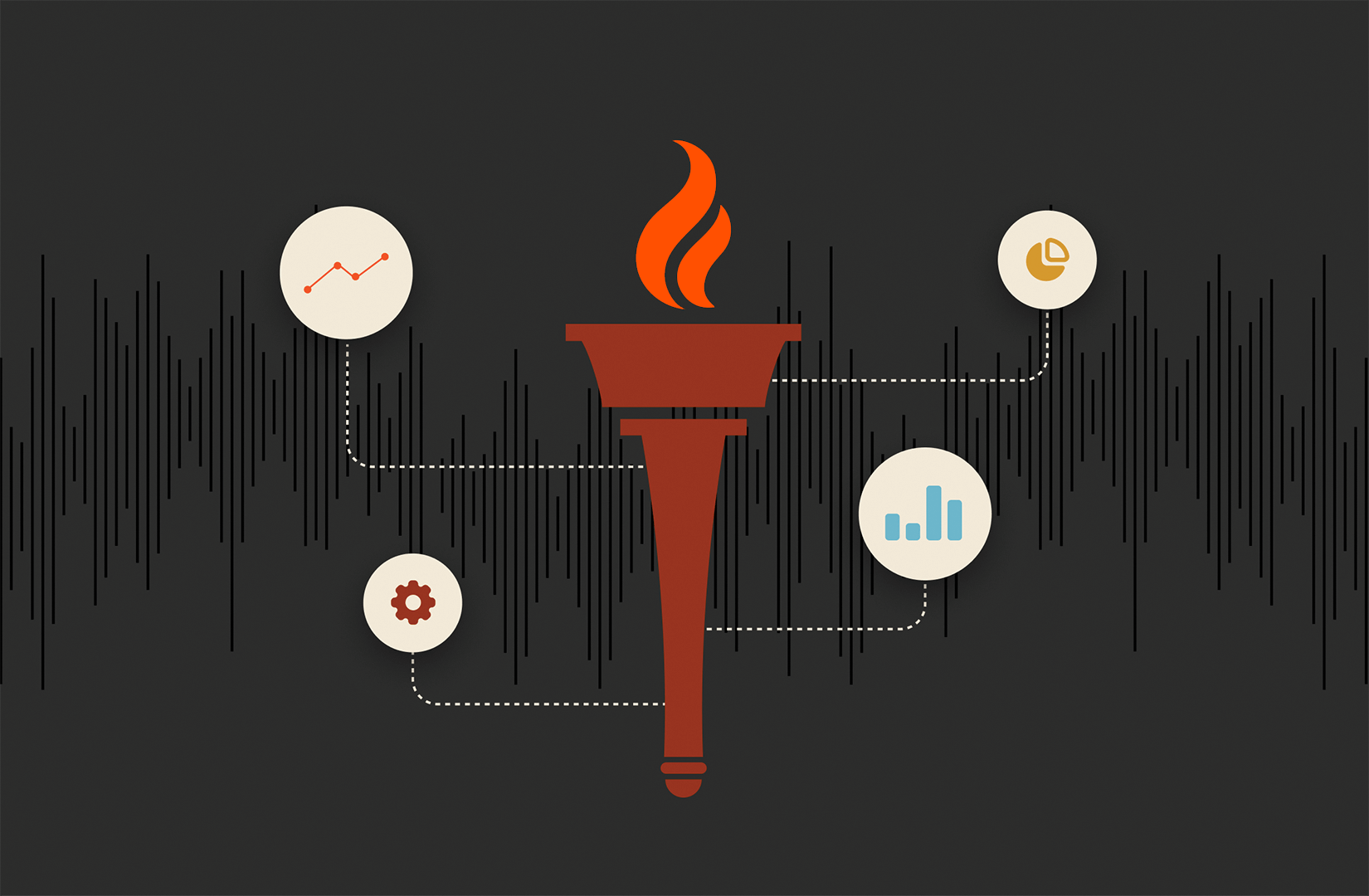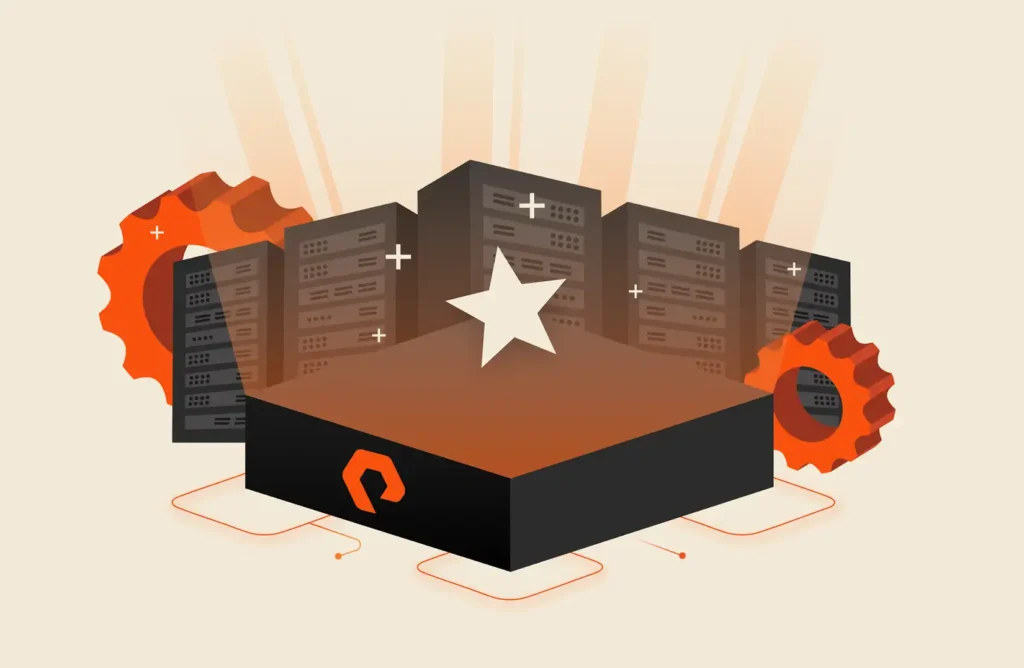Summary
Bringing a global event of massive scale like the Olympics to life is no easy feat. It takes another star behind the scenes—data—helping ensure smooth operations, immersive viewer experiences, and accurate event outcomes.
The Olympic Games have always been a showcase of human achievement. But behind the scenes, it’s also a feat of technological prowess involving vast amounts of data, cybersecurity, logistics, and advanced IT operations.
London 2012 was the first official “Big Data” Olympics, where 60 gigabytes of data was transferred every second.
But this is nothing compared to where we are now.
The 2024 Olympics in Paris promises to be the most tech- and data-intensive event in Olympic history, leveraging cutting-edge technology like AI to ensure smooth operations, immersive viewer experiences, and accurate event outcomes.
Let’s explore how.
Planning, Scheduling, Inventory, and Supply Chains
Years of planning leading up to the events require intense coordination, predictive analytics, inventory supply chains, and scheduling. Complex algorithms help schedule events in a way that minimizes overlap, considering factors such as venue availability, athlete rest periods, and optimal viewing times. Real-time data allows for adaptive scheduling, enabling organizers to make quick adjustments in response to unforeseen circumstances such as weather changes or delays.
Predictive analytics can help anticipate demand for supplies, ensuring that everything from food to medical supplies is available when and where it’s needed. IoT sensors and data management systems are often used to track inventory levels, triggering automatic restocking and reducing the risk of shortages.
Telecommunications: The Backbone of Connectivity
Telecommunications providers and networks often report significant impacts on traffic and IT operations during the Olympics. The surge in demand for real-time communication, live streaming, and data transmission can put immense pressure on telco data infrastructures that ensure communication across the vast network of athletes, organizers, media, and spectators.
In preparation for the Olympics, telco providers may invest in expanding fiber-optic networks, increasing bandwidth capacity, and deploying 5G networks to support high-speed data transmission. It requires meticulous planning, advanced data storage technology, and agile response mechanisms to:
- Ensure connectivity at the event. High-speed internet and mobile networks are crucial for communication among athletes, coaches, and officials. Temporary installations like cell towers and Wi-Fi hotspots can help handle the surge in connectivity demand at the venue.
- Manage a massive increase in traffic. As millions of viewers stream events live, providers often need to scale up their IT operations, deploying additional resources and implementing contingency plans to handle the increased load. Advanced algorithms analyze data to manage network traffic, minimize latency during peak times, and detect and resolve issues swiftly.
Supporting Security—in Person and Online
With heightened global attention increasing the risk of threats, security is paramount at the Olympics. Data-driven technologies like video surveillance help ensure the safety of all participants, enabling communication between security personnel and monitoring real-time threats. To bolster their security protocols, networks implement advanced threat detection and enhanced encryption and secure communication channels to protect sensitive information.
Biometric data, such as facial recognition and fingerprint scanning, is used for secure and efficient access control, preventing unauthorized entry and ensuring the safety of all participants. Digital accreditation for athletes, officials, media, and staff can be managed and verified through data platforms that streamline how access is granted to different areas.

The Innovation Race
Reducing Risk and Navigating the AI Frontier for Future Success
Streaming Data: Bringing the Games to the World
Streaming data is the lifeline of modern sports broadcasting, ensuring that viewers around the globe can watch events live and on demand. This involves real-time broadcasting via content delivery networks (CDNs) to distribute high-definition video to millions of viewers without buffering.
Adaptive bitrate streaming ensures optimal viewing experiences by adjusting the quality of the stream based on the viewer’s internet speed. It uses data to adjust the quality of a media stream based on a user’s bandwidth and device capabilities in real time. This process ensures a smooth playback experience with minimal buffering, even for those with low-end connections.
Dynamic Viewing Experiences with Real-time Graphics and Data
Broadcast data goes beyond just streaming; it involves a range of information that enhances the viewing experience. Real-time data feeds are used to generate on-screen graphics that provide live scores, stats, and other relevant information. This is a modern sports broadcast go-to, seen at the Masters and other prime-time events with AI-powered subtitles and closed captions, ensuring accessibility for all viewers.
AI is also revolutionizing how data is utilized for applications in scoring systems where AI algorithms analyze performance data in real time to provide accurate scoring in sports like gymnastics and diving. AI-driven cameras and drones provide dynamic and engaging angles, bringing viewers closer to the action.
Logistics Data Ensures Smooth Operations
Data technology is integral to the logistics of the Olympics, providing the insights necessary to coordinate complex operations, improve efficiency, enhance security, and ensure a positive experience for all involved. The logistics behind the Olympics are a massive undertaking, with data playing a critical role in coordination and management.
Athletes and equipment are tracked using Radio Frequency Identification (RFID) and Global Positioning System (GPS) technologies. This ensures that athletes are where they need to be at the right times and that their equipment is always accounted for, reducing the risk of delays and misplacements.
Behind the scenes, transportation plays a huge role. Dynamic routing and fleet management are powered by advanced analytics to optimize routes for athletes, officials, and spectators, minimizing travel time and avoiding traffic. Real-time data from GPS and IoT sensors monitor the condition and location of vehicles, ensuring efficient fleet management and timely maintenance.
At the venue, smart infrastructure with sensors monitors aspects of venue operations, such as lighting, temperature, and crowd density, and optimizes energy usage. Real-time data on crowd movement helps manage entry and exit points, seating arrangements, and emergency evacuation plans, ensuring safety and a smooth flow of people.
Data-driven Sustainability
The 2024 Olympics in Paris is aiming to be “the greenest in the event’s history,” making significant strides to address sustainability and environmental impact. Data analytics helps optimize the use of resources such as water, electricity, and materials, supporting the sustainability goals of the Olympics. IoT-enabled waste management systems monitor waste levels and optimize collection routes, reducing the environmental impact of the event.
Data is used for sustainability in various other ways, including operations and logistics, real-time monitoring of resources, and carbon-offset tracking. And cloud-based technology is used to reduce the overall broadcast footprint and power requirements.
Data: The Behind-the-scenes Star Athlete of the Olympics
The 2024 Olympics is a testament to how data and IT infrastructure are indispensable in orchestrating a global event of this magnitude. From telecommunications and streaming to AI and uptime, IT professionals play a crucial role in making the Olympics a success.
As you watch the athletes strive for gold, remember: It’s the meticulous work of IT professionals that brings the Olympics to life—and to your home—through the power of data.
Go for Gold
Achieve your own incredible feats with the platform that grows with you, forever.








